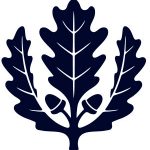The Doctor of Physical Therapy Program at the University of Connecticut prepares students for careers as physical therapists in employment settings including hospitals, rehabilitation centers, schools, patient’s homes, and outpatient clinics. Graduates are trained to provide physical therapy services to patients suffering from widely varying conditions. Graduates are prepared for licensure indicative that the physical therapist is allowed to practice in all aspects of the physical therapy profession. The DPT curriculum requires that all students acquire didactic knowledge as well as learning skills and attitudes essential to the profession and agreed upon by the faculty as requisite for the practice of physical therapy. Thus, both cognitive and technical skills are necessary to complete the curriculum.
The faculty of the Physical Therapy Program has a responsibility for the welfare of the patients treated or otherwise affected by students enrolled in the program as well as for the educational welfare of its students. The technical standards developed for the Doctor of Physical Therapy Program establish the essential qualities necessary for students to achieve the knowledge, skills and abilities of a novice physical therapist and meet the expectations of the Commission for Accreditation of Physical Therapy Education. Thus, individuals must meet the technical standards described below, with or without accommodation, throughout their course of study. Information related to accommodation and the University of Connecticut Policies and Procedures Regarding Students with Disabilities can be accessed at this website: www.csd.uconn.edu
Motor Skills
The student must have sufficient motor capabilities to execute the movements and skills required to provide safe and effective physical therapy patient/client management. These include, but are not limited to:
- Performance of moderately strenuous physical activities.
- Coordination, speed and agility to assist and safely guard (protect) patients who are walking, exercising or performing other rehabilitation activities.
- Adjust, move and position equipment and patients, which involves bending or stooping freely to floor level, reaching above the head, lifting, carrying, pulling, and pushing.
- Provide cardiopulmonary resuscitation
- Manipulate small devices used in physical therapy; this involves adjusting gauges, dials,
small nut/bolts, and equipments settings - Elicit information from patients by palpation, auscultation, percussion and other examination procedures.
- Legibly record/document all records required for academic and clinical coursework
Sensory/Observational Skills
The student must be able to demonstrate the functional use of vision, hearing and other sensory modalities. These include but are not limited to:
- Observe demonstrations and participate in laboratory coursework
- Obtain an appropriate medical history directly from the patient or guardian
- Determine the physical needs of any patient with potential emergency medical conditions
- Palpate a pulse and detect changes or abnormalities of surface texture, skin temperature, body segment contour, muscle tone, and joint movement.
- Sufficient position, movement and balance sensations to assist and safely guard (protect) patients with movement dysfunctions
Communication Skills
Students must be able to utilize effective and efficient communication with peers, faculty, patients and their families, and other health care providers. These include but are not limited to:
- Read at a competency level that allows one to safely carry out all academic and clinical assignments
- Effectively communicate verbally (interpret and express) information regarding the comfort and well-being of patients, and to communicate with patients/families, health care professionals and third party payers.
- Recognize, interpret and respond to nonverbal behavior of self and others
Behaviors
Students must be capable of behaviors required for the successful conduct of physical therapy in all environments. These include but are not limited to:
- Exercising good judgment
- Developing empathetic and therapeutic relationships with patients
- Tolerating close physical contact with other students, colleagues and patients
- Working appropriately with patients, other students and co-workers in stressful situations
- Prioritizing multiple tasks, integrate information and make decisions
- Acting safely and ethically during all academic and clinical environments
- Establishing rapport with patients, students and co-workers from a variety of ethnic and cultural backgrounds
